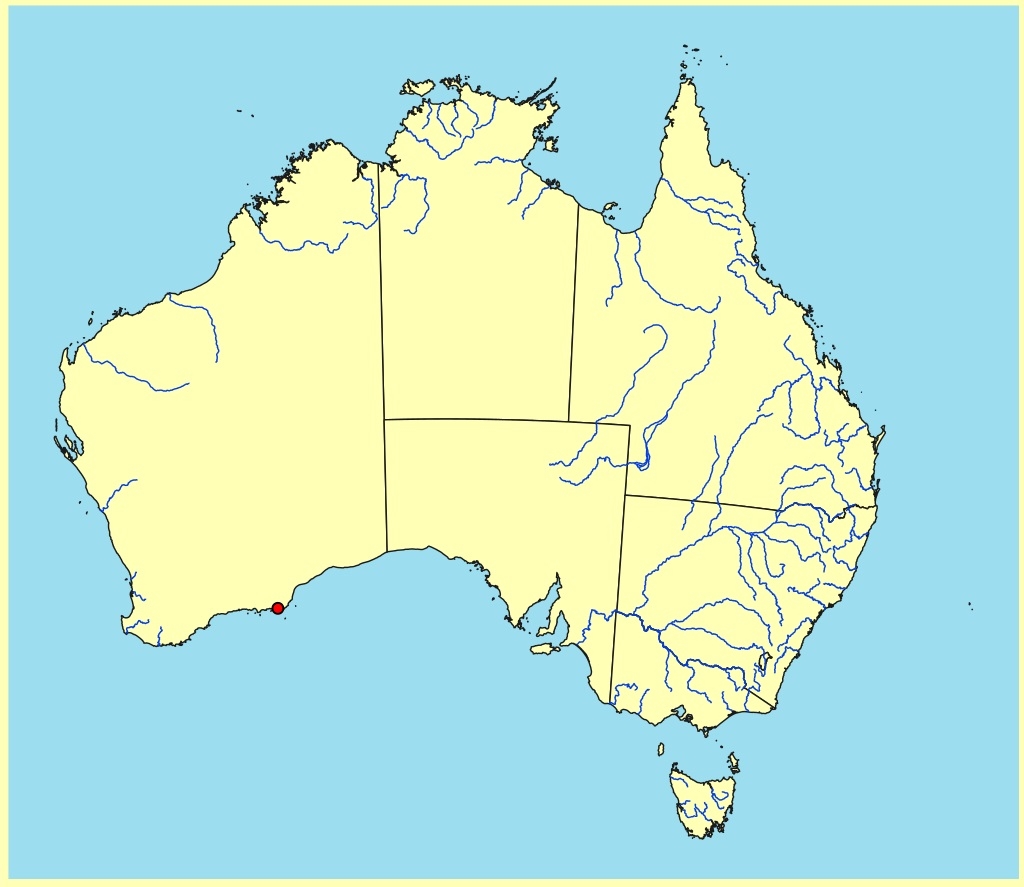Eucalyptus | Symphyomyrtus | Dumaria | Tetrapterae
Euclid - Online edition
Eucalyptus sweedmaniana
Eucalyptus sweedmaniana Hopper & McQuoid, Australian Systematic Botany 22: 185-187, figs 5,6 (2009).
T: Western Australia: (precise location withheld): Mount Arid, 31 January 2006, L. Sweedman LSW6771 & S.D. Hopper. Holo: PERTH 07478526, 07478518. Iso: CANB. [CANB isotype not received 4 December 2019].
Prostrate sprawling mallee or low decumbent shrub to 1 m tall and spreading for up to 5 m wide. Forming a lignotuber.
Bark smooth throughout, pale grey to silvery grey.
Branchlets square in cross-section; lacking oil glands in the pith.
Juvenile growth (coppice or field seedlings to 50 cm): not seen.
Adult leaves coarse, thick, usually alternate, petioles 2.0–4.8 cm long; blade broadly lanceolate, apiculate, 16.5–26.3 cm long, 4.5–6.7 cm wide, base tapering to petiole or rounded, margin entire, apex pointed, concolorous, glossy, green, side-veins greater than 45° to midrib, reticulation dense, intramarginal vein remote from margin, oil glands intersectional, few or not visible.
Inflorescence axillary unbranched, peduncles rigidly down-turned, with broad curved wings, 0.5–1.5 cm long; bud solitary, sessile. Mature buds more or less cuboid with 4 broad wings at the angles (bud dimensions including wings to ca 5 cm long, 3.5 cm wide), hypanthium red tapering a little basally, scar present (outer operculum shed early), operculum pyramidal (ca 1.5–2 cm long), stamens inflexed, filaments glandular, anthers small cuboid, versatile, sub-basifixed, dehiscing by longitudinal slits, style long and straight, stigma tapered, locules 4, number of ovule rows unknown. Flowers red to pink.
Fruit on rigidly down-turned winged peduncles, pedicel absent; cuboid and prominently winged, 3.4–3.8 cm long, 3–4.1 cm wide (including wings), wings extending to 5–7 mm above rim curving towards the disc which descends vertically, valves 4, enclosed.
Seeds black or dark grey, 4–5 mm long, shortly pyramidal, with prominent ridges continuous with conspicuous encircling marginal flange, dorsal surface shallowly reticulate, hilum terminal.
Cultivated seedlings (measured at ca node 10) : cotyledons reniform; stems prostrate, rounded to square in cross-section; leaves always petiolate, opposite for 2 to 4 nodes then alternate, elliptic to ovate to broadly lanceolate, 4–6 cm long, 2–2.5 cm wide, dull, green. (Data from Hopper & McQuoid 2009).
Flowering is reported to be sporadic, but noted for January on type specimen.
A prostrate to decumbent shrub endemic to Western Australia and of very restricted distribution east of Esperance in coastal habitat. Leaves are thick-textured green and glossy with large winged reddish flower-buds and winged square fruit borne solitarily in the leaf axils.
In the classification of Brooker (2000) four species, E. tetraptera, E. stoatei, E. forrestiana and E. dolichorhyncha form series Tetrapterae sharing the features: reniform cotyledons, large buds (3 cm or more) and fruit borne solitary in leaf axils, reddish hypanthia of buds, outer operculum shed early in bud development, ovules in 6 or more rows on the placentae, seed with prominent flange encircling the body and a terminal hilum. Hopper & McQuoid (2009) included two new species in series Tetrapterae, viz. Eucalyptus brandiana and E. sweedmaniana, both closely related to E. tetraptera sharing the coarse large leaves, winged bud and fruit features and pink-red stamens, while E. stoatei, E. forrestiana and E. dolichorhyncha all have yellow stamens and thin narrower crown leaves.
Eucalyptus sweedmaniana differs from both E. tetraptera and E. brandiana in its shorter fruit with wings extending towards the disc and faint subsidiary ribbing, and generally longer leaves (though with some overlap in dimensions), prostrate habit which persists from seedling to mature plant. E. brandiana differs further in lacking a lignotuber being an erect mallet with foliage and inflorescences confined to upper branches; E. tetraptera differs from E. sweedmaniana in its slightly longer fruit with wings to top of fruit body only, no subsidiary ribbing, relatively shorther leaves, and erect mallee habit, although exposed coastal plants may be prostrate but seedlings still grow upright (fide Hopper & McQuoid (2009)).
Habit
Seedlings
Adult leaves cm
Fruit cm (incl wings)
tetraptera
lignotuber, upright mallee rarely prostrate
erect
9–28 x 2.8–11.6
3.5–6.6 x 2.5–5.5
brandiana
no lignotuber, erect mallet habit
erect
14–23.8 x 4.2–6.2
5.6–6.8 x 4.8–6
sweedmaniana
lignotuber, decumbent to prostrate shrub
prostrate
16.5–26.3 x 4.5–6.7
3.4–3.8 x 3–4.1
Data after CANB specimens and Hopper & McQuoid (2009).
Eucalyptus sweedmaniana : named after Luke Sweedman (1958–), botanist and seed specialist, Kings Park and Botanic Garden, Perth, WA, collector of type specimen.






